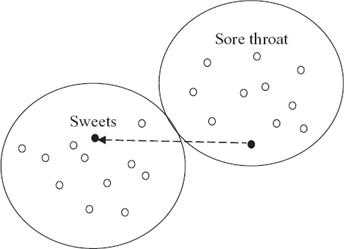20
The context rules
Knowing that the context affects people's judgements of products leads to the insight that it can be both more powerful and easier to change a product's context than to change the product itself. So we can use situations and behaviours (travel to/from work, lunch, a night on the town) as the springboard for finding new contexts in which the product can engage with the consumer.
We never make our judgements about phenomena or products in isolation. Instead, we use the context as our frame of reference for forming an opinion. In actual fact, the context generally has more significance for our judgements and reactions than the products and marketing in themselves. This is what is termed context effects.
Two very illuminating examples of this are the brands Dressmann (a Scandinavian men's clothing store) and McDonald's, which are perceived totally differently in several of their markets. Studies have shown that Dressmann – somewhat simplistically – is seen as ‘budget-priced everyday fashion’ in Sweden and appeals primarily to men over 30 years of age; while Dressmann shops and clothing in Finland are perceived as trendy and the brand is very successful among the young. In Sweden, McDonald's is synonymous with fast food and its restaurants appeal primarily to people who want to get something to eat quickly that's simple and cheap. In some countries in Eastern Europe, however, McDonald's is a high-status restaurant associated with quite different values.
The fact that the Dressmann and McDonald's brands are perceived in such vastly different ways in different markets is not primarily because these companies have varied their offer, but rather because of the differences in people's frames of reference within these different markets. This is due in part to the fact that the constitution of product categories offered differs from country to country, with different brands competing with each other, as in Figure 20.1.
The black brand offers exactly the same products and concepts and has the same position in Market A as in Market B, for example, on the dimensions of price and trend. But how might you describe the brand in these two very different markets? If you were in Market A, you would most probably say that the brand is cheap and not particularly trendy. If you instead found yourself in Market B, you would probably come to the conclusion that the brand was quite highly priced and was trendy. Even though the brand has scored exactly the same values on the dimensions of price and trend, the perception of the brand is quite different in the two markets because the other brands in the product category in the two markets are different, too. This is precisely how positioning works: it's not about what products and brands have to offer per se but about how they relate to each other within a context.

Knowing that context effects influence people's judgements of products leads directly to the insight that it may be more effective and easier to change a product's context than to change the product itself. We know that to be successful, the creative result of business innovation needs to be new and meaningful. Changing the context of a product creates novelty because people will see the product and what it offers in a new context and within different frames of reference. When you relate the product to its context, context effects will also guarantee that people perceive the product as having a certain meaning. In Figure 20.2 you can see, for example, how the Scandinavian company Lakerol was able to change its meaning from that of a mildly medicinal throat tablet to a relatively healthy alternative to regular sweets. At one time chewing gum made the journey from an alternative to sweets to a pleasant-tasting and easy alternative for oral hygiene (resulting in over 30% sales growth over a very short period).
Changing the context is not just about going from one product category to another. It might also involve finding completely new contexts based on how people live their lives today. Very few people actually think in terms of ‘Now I'm going to buy some frozen food’ when they go to a supermarket, or ‘What museum will I visit today?’ when they open up the pages of their local newspaper's entertainment supplement. Instead, we think in terms of goals such as for example ‘What's fast and easy for dinner?’ or ‘What can I do for some fun this Saturday afternoon?’ Most of our purchases are made up of such (more or less explicit) goal categories. Products from a wide range of disparate product categories compete with each other in goal categories. For example, ‘something fast and easy for dinner’ might include the product categories frozen food, takeaway food, tinned soup, cereal with yoghurt or milk, the local hotdog stand or salad from the salad counter. And museums might be competing with amusement parks, shops, brunch restaurants, video/DVD rental shops and tennis times for some entertainment on a Saturday afternoon. Using the consumer's goals as your starting point, we can discover whole new possibilities for marketing products. Similarly, we can use situations and behaviours (travel to/from work, lunch, a night on the town) as the springboard for finding new contexts in which the product can engage with the consumer.

Using new contexts assists your thinking about your current products because you will discover new values and positions (for example, that the throat tablet is a relatively healthy alternative to regular sweets). This may lead to further development of your concept (for example, Läkerol has developed bigger lozenges and also started making lozenges you chew rather than suck) and to the development of completely new products (why not chewing gum, jelly sweets or caramel toffees?). As we saw above in this book, bisociations between banking and the situations ‘lunch’ and ‘travelling to/from work’ gave rise to a whole new set of products.

